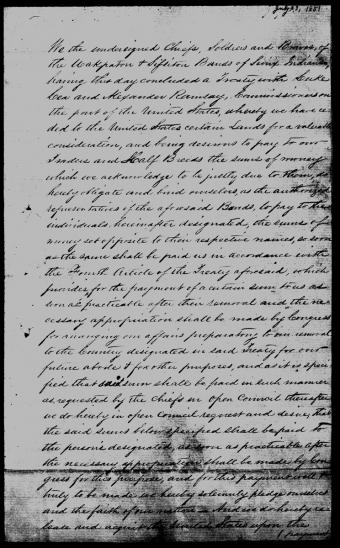Through two virtually identical treaties signed at Traverse des Sioux with the Wahpeton and Sisseton bands and at Mendota with the Mdewakanton and Wahpekute bands, the Dakota ceded all their land in present-day Minnesota, South Dakota, and Iowa, except for a 150-by-20-mile strip of reservation land flanking the Minnesota River. Before the treaties were ratified by Congress, the provision for a reservation was removed, leaving the Dakota without a guaranteed land base in Minnesota. President Millard Fillmore agreed that the Dakota could stay temporarily on the land specified in the treaty.
After Wahpeton and Sisseton leaders signed the Treaty of Traverse des Sioux, they were ushered to another document, which some later said they were tricked into signing. The Traders’ Paper, as the document is known, turned over about a third of the Dakotas’ cash payments to a group of traders, including Henry Sibley and his associates, to satisfy years of debts allegedly accumulated in the fur trade.





